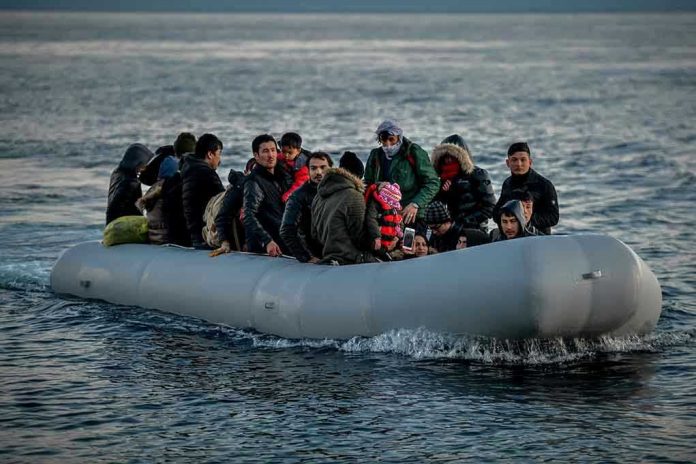
A tragic boat capsize off Yemen’s coast claims the lives of over 60 migrants, spotlighting one of the world’s deadliest migration corridors.
Story Highlights
- Over 60 migrants died after a boat capsized off the coast of Yemen.
- The Gulf of Aden is a perilous migration route used by those fleeing conflict and poverty.
- Smugglers exploit the route, often with deadly consequences for migrants.
- International organizations call for increased protection and humanitarian aid.
Tragedy at Sea: Over 60 Migrants Dead
More than 60 migrants lost their lives when a boat capsized off Yemen’s coast, a stark reminder of the perils faced by those attempting the treacherous journey across the Gulf of Aden. The narrow stretch of water between the Horn of Africa and Yemen is notorious as one of the world’s most dangerous migration routes. Migrants, primarily from Ethiopia and Somalia, often embark on this journey seeking safety and better opportunities in the Gulf states.
The boat tragedy underscores the risks posed by the hazardous conditions and the ruthless practices of human traffickers. Smugglers, driven by profit, frequently overcrowd vessels and show little regard for the safety of those on board. Despite the dangers, many migrants see no other option due to ongoing conflicts and economic desperation in their home countries. Yemen, embroiled in its own conflict, offers little refuge for those who survive the crossing, with limited access to humanitarian aid.
The Gulf of Aden: A Deadly Migration Corridor
The Gulf of Aden has long been a migration gateway, but its significance has grown in recent decades due to regional instability and conflict. The crossing is the first leg of a dangerous journey that sees migrants endure violence, exploitation, and often death. Migrants typically depart from ports in Somalia or Djibouti, aiming for Yemen’s southern coast. The route has become more perilous as smugglers exploit the lack of enforcement in Yemen, where state authority is weak.
The Gulf of Aden route is a complex intersection of migration, conflict, and organized crime. Human trafficking networks have flourished amid the chaos, adapting their tactics to circumvent enforcement efforts. The persistence of these networks highlights the urgent need for a coordinated regional response to address both the immediate humanitarian needs and the root causes driving migration.
International Calls for Action
In the wake of the latest tragedy, international organizations have renewed calls for increased protection and access to humanitarian aid for migrants in Yemen. The International Organization for Migration (IOM) and UNHCR have long advocated for safer migration pathways and emphasized the need for regional cooperation. However, the ongoing conflict in Yemen poses significant challenges for humanitarian operations, limiting the reach of aid efforts.
The international community faces a daunting task in addressing the complex web of factors fueling migration across the Gulf of Aden. While immediate humanitarian responses are critical, experts stress the importance of tackling the underlying issues, such as conflict resolution and economic development in migrants’ countries of origin. Without meaningful intervention, the tragic cycle of displacement and loss is likely to continue.
Sources:
Mixed Migration Centre: Shifting Tides
Internal Displacement Monitoring Centre: Yemen cross-border displacement reports







